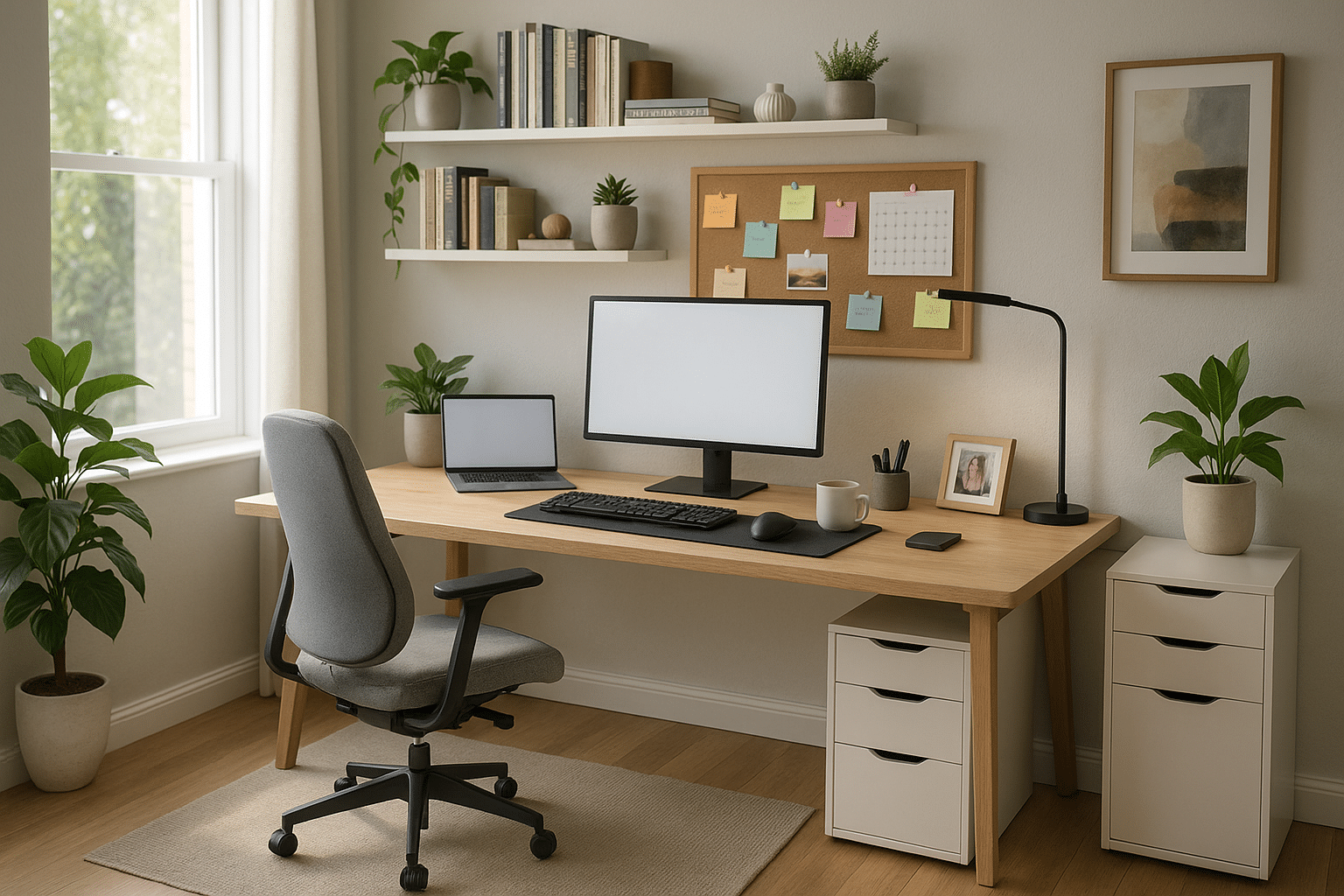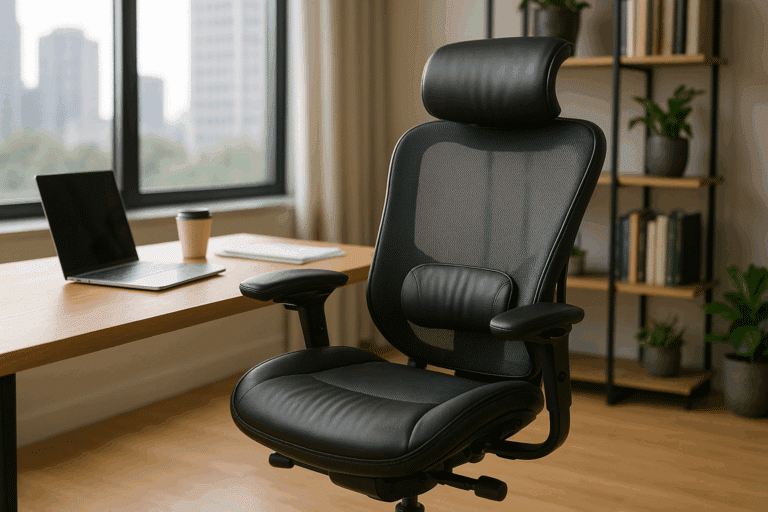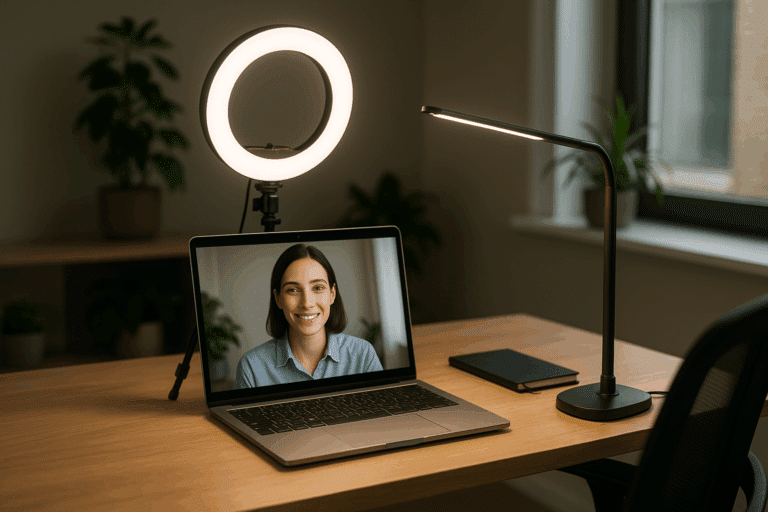Today’s digital era has blurred the lines between work and home. More than ever, our homes have become the hub of our professional lives. This transformation, sparked by the wave of remote work, has put an emphasis on the need for a well-designed home office. A space that not only fosters productivity but also sparks creativity and innovation. In this article, we delve into the art of designing a productive home office – a space that maximizes efficiency and creativity.
We begin by understanding that the design of your home office should not just focus on aesthetics, but also functionality. After all, you’re not just creating a space that looks good, but one that works for you. The right environment can stimulate your senses, increase your focus and, above all, make work enjoyable. 🏠💻🌟
Layout is the Key 🔑
Imagine stepping into your home office, where every element is strategically placed to cater to your needs. The layout of your workspace can have a significant impact on your productivity. Therefore, understanding your workflow and arranging your office to complement it is vital. We will guide you on how to maximize your space, ensure smooth navigation, and prevent clutter.
Lighting: The Silent Productivity Booster 💡
The right lighting can transform your workspace from merely functional to positively invigorating. Natural light is a proven mood enhancer and productivity booster. However, not all home offices have the luxury of ample natural light. Fret not! We’ll explore effective artificial lighting solutions that can simulate daylight, reduce eye strain, and keep your spirits high throughout the workday.
Color Psychology and Productivity 🎨
Did you know that certain colors can influence your mood and productivity? This theory, known as color psychology, can be a powerful tool in designing your home office. From choosing wall colors to picking out office supplies, understanding the psychological effects of color can help create a space that promotes concentration and creativity.
Functional Furniture: Comfort Meets Efficiency 🪑
Your choice of furniture plays a significant role in maintaining a healthy and productive work environment. Ergonomics is crucial to prevent physical strain and ensure comfort during long working hours. We’ll dive deep into how to select the right chair, desk, and other essential furniture to enhance your workspace experience.
Technology and Home Office 💻
Your home office is incomplete without the right tech tools. However, with numerous options available, choosing the best ones can be overwhelming. From hardware to software, we’ll cover essential technology for a home office that not only meets your professional requirements but also fits your budget.
Designing a home office that boosts efficiency and creativity is both an art and science. It involves understanding your work habits, preferences, and needs, then translating them into a workspace that inspires and supports your productivity. So, buckle up as we embark on this journey to transform your home office into a haven of productivity and creativity. Let’s make work from home, work for you!
👀 Setting the Stage: The Importance of a Productive Home Office
For many of us, the boundaries between home and work have become blurred. More and more professionals are shifting towards remote work, and the home office is quickly becoming a central hub of creativity and productivity. While the convenience and flexibility of a home office are undeniable, designing a space that fosters maximum efficiency and creativity is a challenge that must be addressed head-on.
At the heart of this challenge is understanding the impact of physical surroundings on our mental well-being and work productivity. Our work environment influences our mood, focus, and overall work quality. A cluttered, distracting workspace can lead to increased stress levels, while a well-organized, aesthetically pleasing environment can enhance productivity and stimulate creativity. That’s why it’s crucial to get your home office setup right.
So, how do you create a home office that not only functions well but also boosts your creativity and productivity? Let’s dive deep into the art of designing a productive home office, from choosing the right furniture to optimizing your space with smart storage solutions and enhancing your work environment with the right colors and lighting.
🪑 Choose Your Office Furniture Wisely: Functionality Meets Aesthetics
Choosing the right office furniture is a crucial first step in setting up a home office. The goal is to create a space that is functional, comfortable, and visually appealing. Your desk and chair are the most critical pieces of furniture in your home office. These pieces should not only be ergonomically designed to support long hours of work, but they should also blend seamlessly with your home’s decor.
A desk that is too small can feel cramped and limit your ability to work efficiently, while a desk that is too large can make your space feel overwhelming. A chair that is uncomfortable can lead to back pain and other physical discomforts, distracting you from your work. So, invest in a desk and chair that are just right for you and your work needs.
Here’s a comparative table of the top office desks and chairs for your reference:
| Product | Features | Pros | Cons |
|---|---|---|---|
| Office Desk A | Spacious, sturdy design, integrated storage | Ample workspace, supports organization | May be too large for small spaces |
| Office Chair A | Ergonomic design, adjustable features | Supports long hours of work, promotes good posture | May be expensive |
👉 Check out the video below by Office Gear Zone on YouTube for a detailed guide on choosing the right office chair: “The Ultimate Guide to Ergonomic Chairs”.
📦 Optimize Your Space: Smart Storage Solutions
Keeping your workspace organized is a key element in designing a productive home office. A clutter-free desk and surrounding area help maintain a clear mind, aiding in focus and efficiency. Integrating smart storage solutions into your home office design can help you maintain order and stay on top of your workload.
Consider incorporating shelving units, filing cabinets, or even a pegboard to organize your essential items. These storage solutions not only provide a place for everything, but they also add an aesthetic element to your home office. It’s all about finding a balance between functionality and design.
A comparative table of different storage solutions might help you decide:
| Storage Solution | Features | Pros | Cons |
|---|---|---|---|
| Shelving Unit | Multiple shelves, freestanding or wall-mounted | Provides ample storage, adds visual interest | Can take up considerable space |
| Filing Cabinet | Multiple drawers, lockable options | Organizes documents, secure storage | May not blend well with home decor |
For more tips on organizing your home office, watch ClutterBug‘s video on YouTube, “How to Organize Your Office Closet | Part 5 of 9 Home Office Organization Series”.
🎨 Create Your Ideal Work Environment: Colors and Lighting
Your home office should be a space that motivates and inspires you. The colors you choose for your office can have a significant impact on your mood and productivity. For instance, blues and greens are often associated with calm and focus, while yellows and reds are known for stimulating creativity and energy.
Lighting is another crucial factor in creating a productive work environment. Natural light is the best option as it enhances mood and reduces eye strain. Position your desk near a window if possible, and supplement with task lighting for those darker hours. Avoid harsh overhead lighting as it can lead to headaches and eye discomfort.
Make sure your workspace reflects your personal style and preferences. Whether you prefer a minimalist design or a more eclectic aesthetic, create a space that makes you feel good and encourages you to do your best work.
Get inspired by watching Home Designing‘s YouTube video “Home Office Interior Design Ideas (on a budget)”. Remember, the key is to design a space that aligns with your work habits and aesthetic preferences.

Conclusion
In wrapping up this comprehensive discussion on the theme of software engineering, it’s crucial to look back and contemplate the key points we’ve examined in this deep dive. We embarked on this journey by familiarizing ourselves with the fundamental notions of software engineering, its significance, and the roles of a software engineer. We analyzed the diverse methodologies used in the discipline, such as the Waterfall, Agile, and DevOps methodologies. We additionally unpacked the steps involved in software development lifecycle and the importance of each phase.
Throughout our discussion, we have highlighted the importance of software engineering in today’s digital world. It’s not just about writing codes, but it also involves understanding customer needs, planning, designing, testing, deployment, and maintenance. A good software engineer is a problem solver, a designer, a tester, and a communicator, all rolled into one.
We’ve also underscored the significance of methodologies in software engineering. These methodologies provide the necessary guidelines and processes to make the software development process organized and efficient. They ensure that every phase of the software development lifecycle is properly executed, which in turn results in quality software that meets the customer’s requirements.
It’s crucial to remember that the world of software engineering is ever-evolving. Staying updated with the latest trends and continuously enhancing one’s skills is the key to staying relevant in this field. Software engineering has a significant impact on various sectors, from healthcare to finance, from entertainment to education. It’s more than just a profession; it’s a tool that can transform the world.
To learn more about software engineering, I recommend checking out resources such as IEEE Computer Society and ACM SIGSOFT. These platforms offer a wealth of information and are fantastic for keeping up to date with the latest in the industry.
In conclusion, software engineering is a fascinating and vital field, essential in shaping our digital future. We’ve only scratched the surface here, and there’s so much more to explore. I encourage you to delve deeper into this subject, apply the knowledge you’ve gained, and share this wealth of information with others who might benefit. Please feel free to comment below if you have any questions or if there’s a specific topic in software engineering you’d like to learn more about.
And don’t forget to share this article if you found it helpful! The world of software engineering is expansive and ever-evolving, and sharing knowledge is the best way for us all to grow together. 😊🚀
Thank you for joining me on this insightful journey. Until next time, keep coding, keep exploring, and keep growing. 🌟💻



